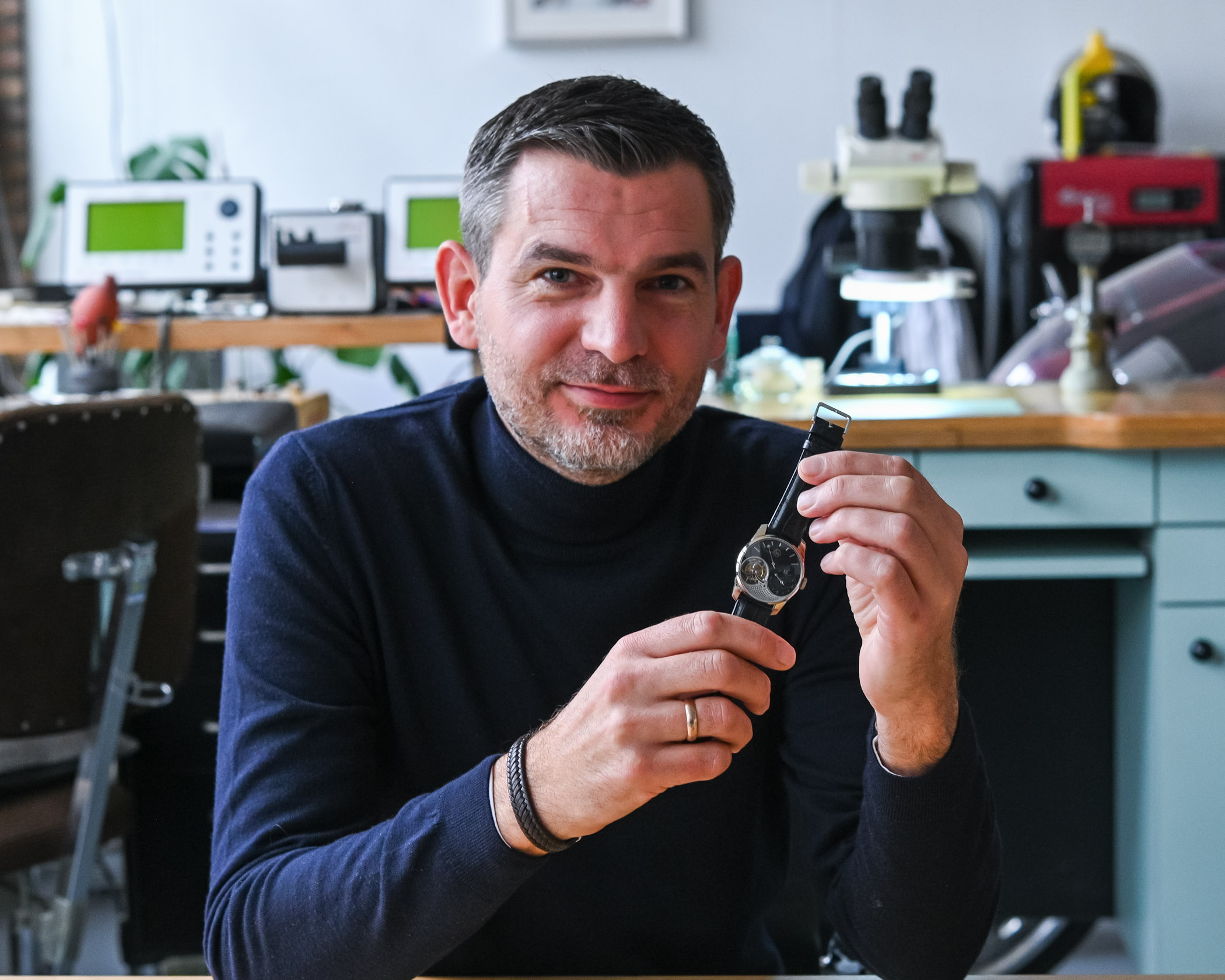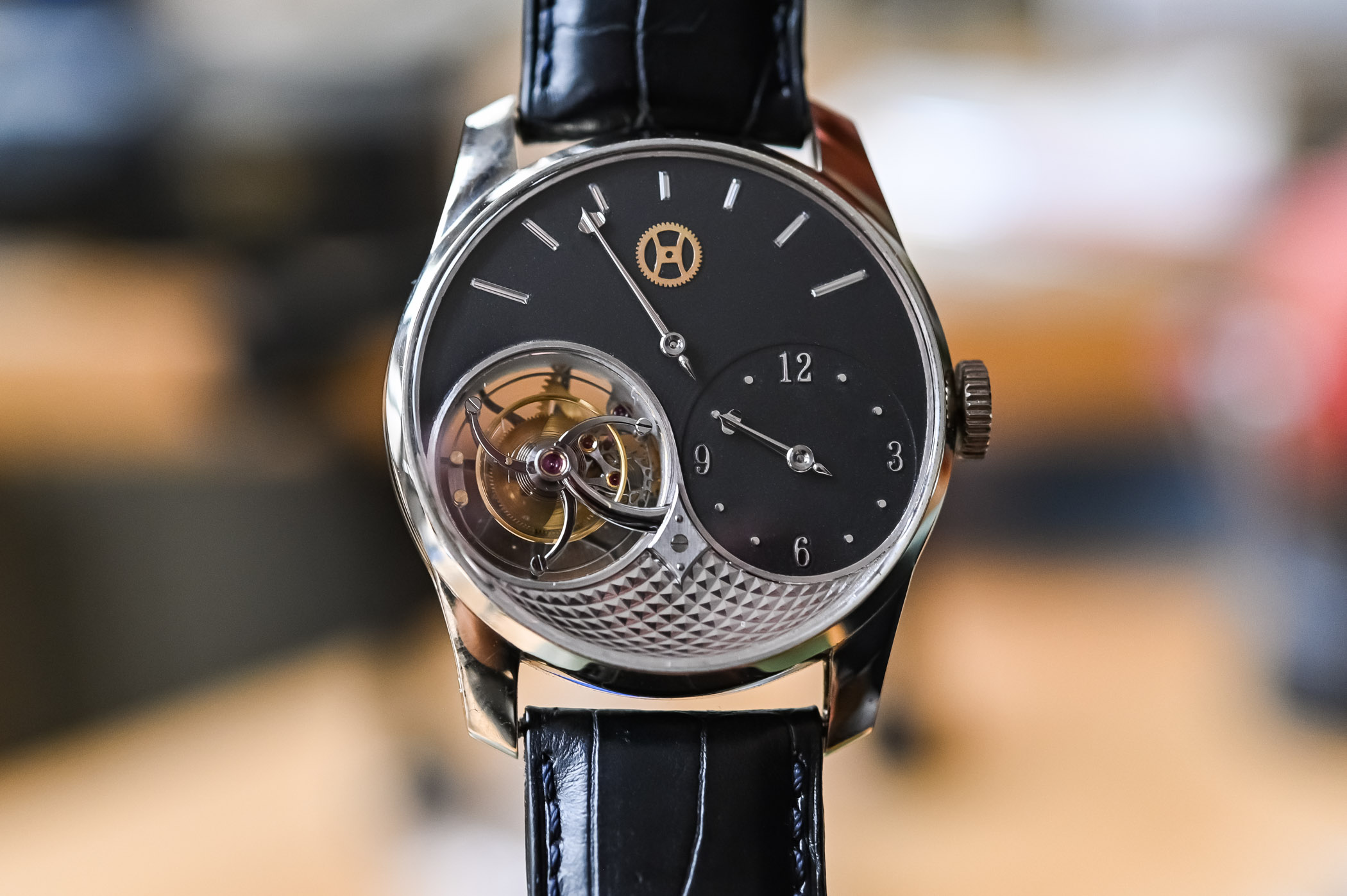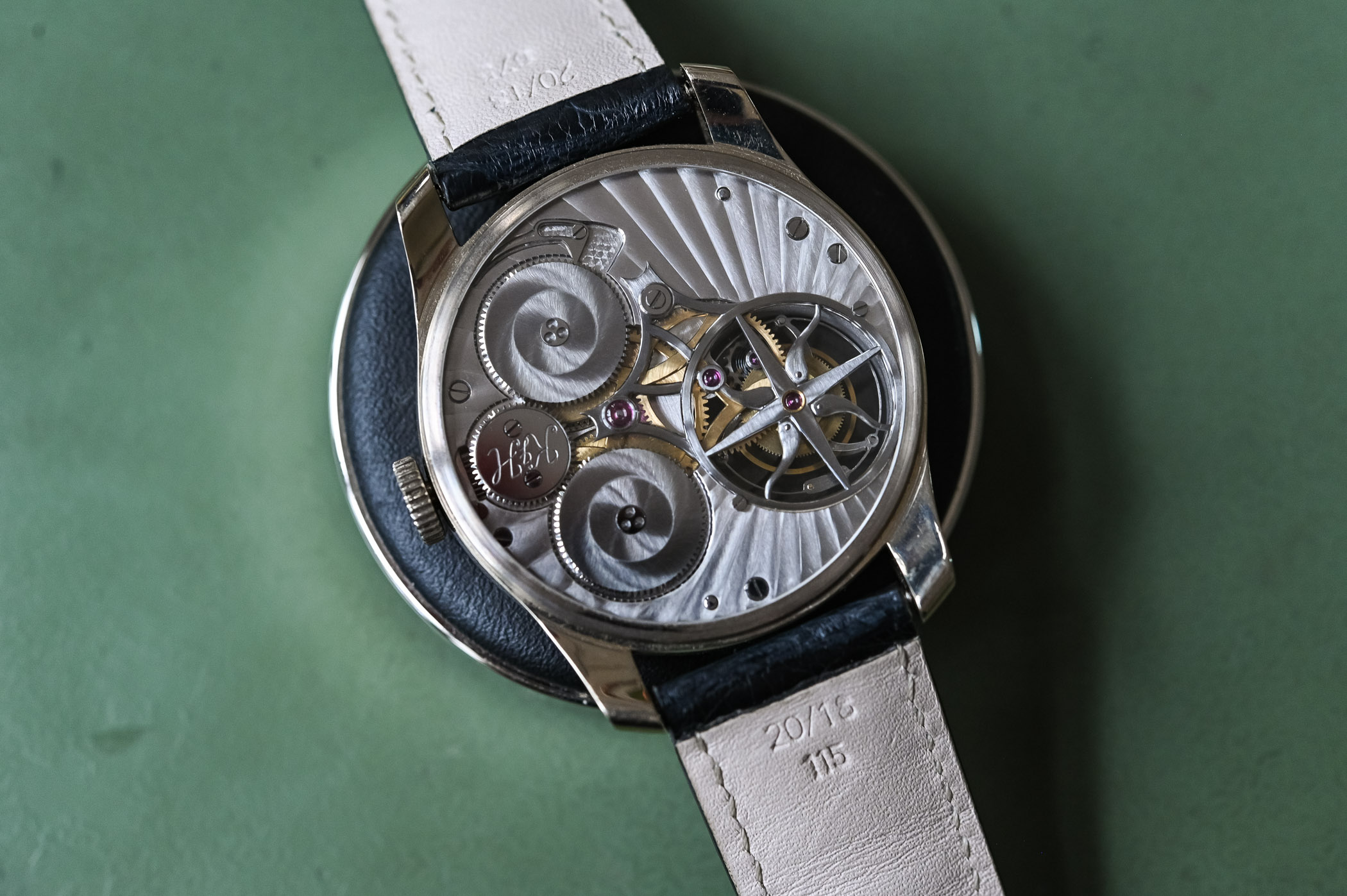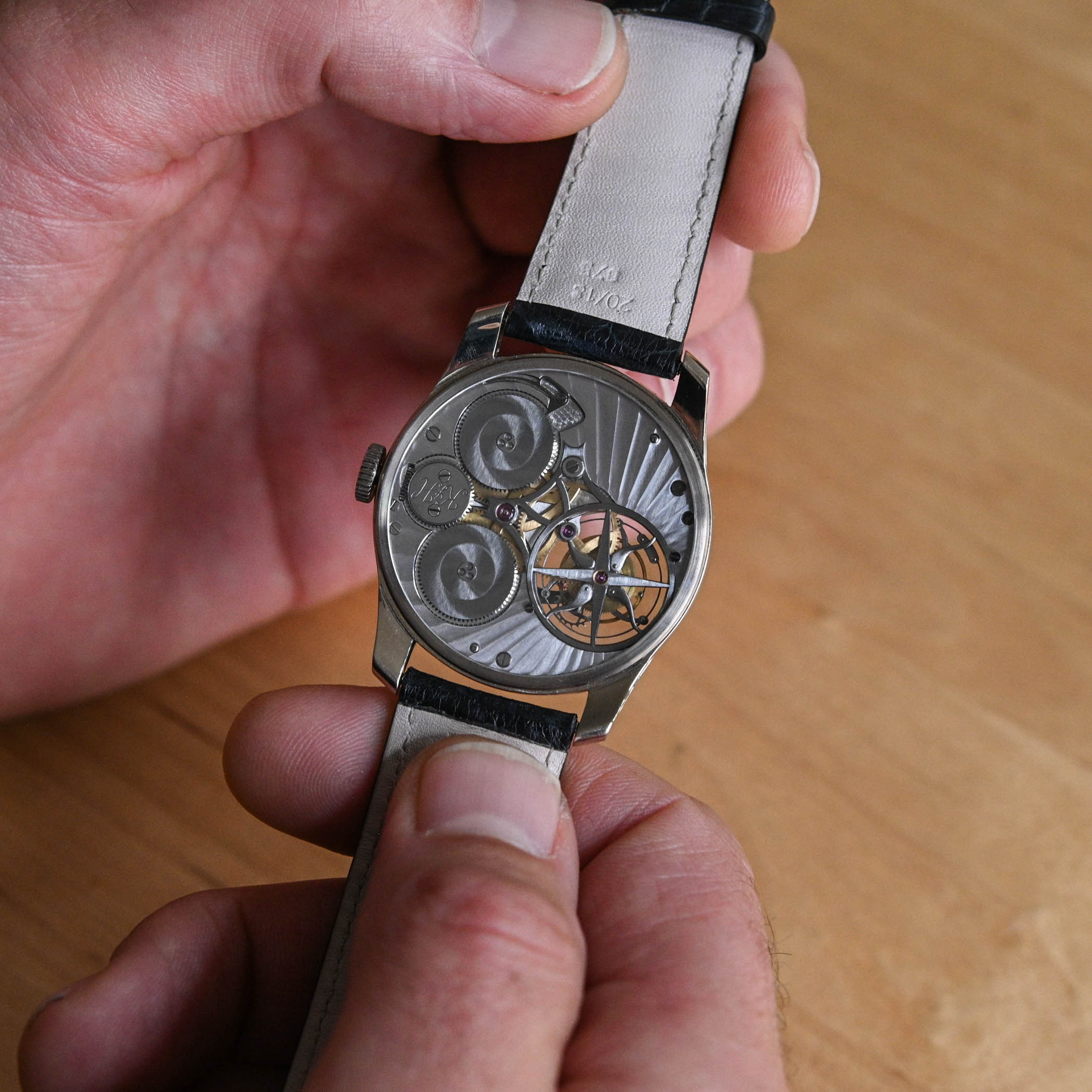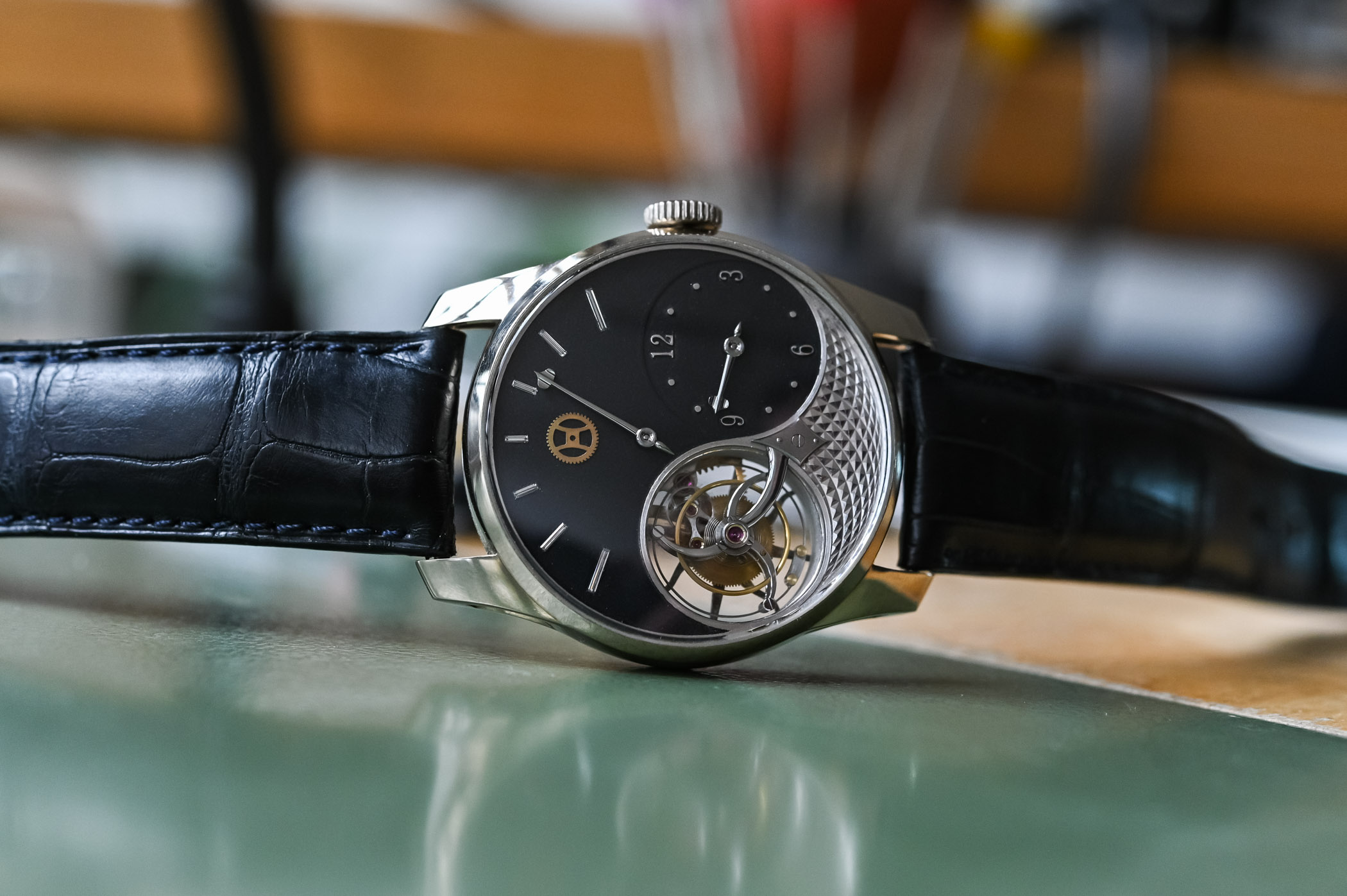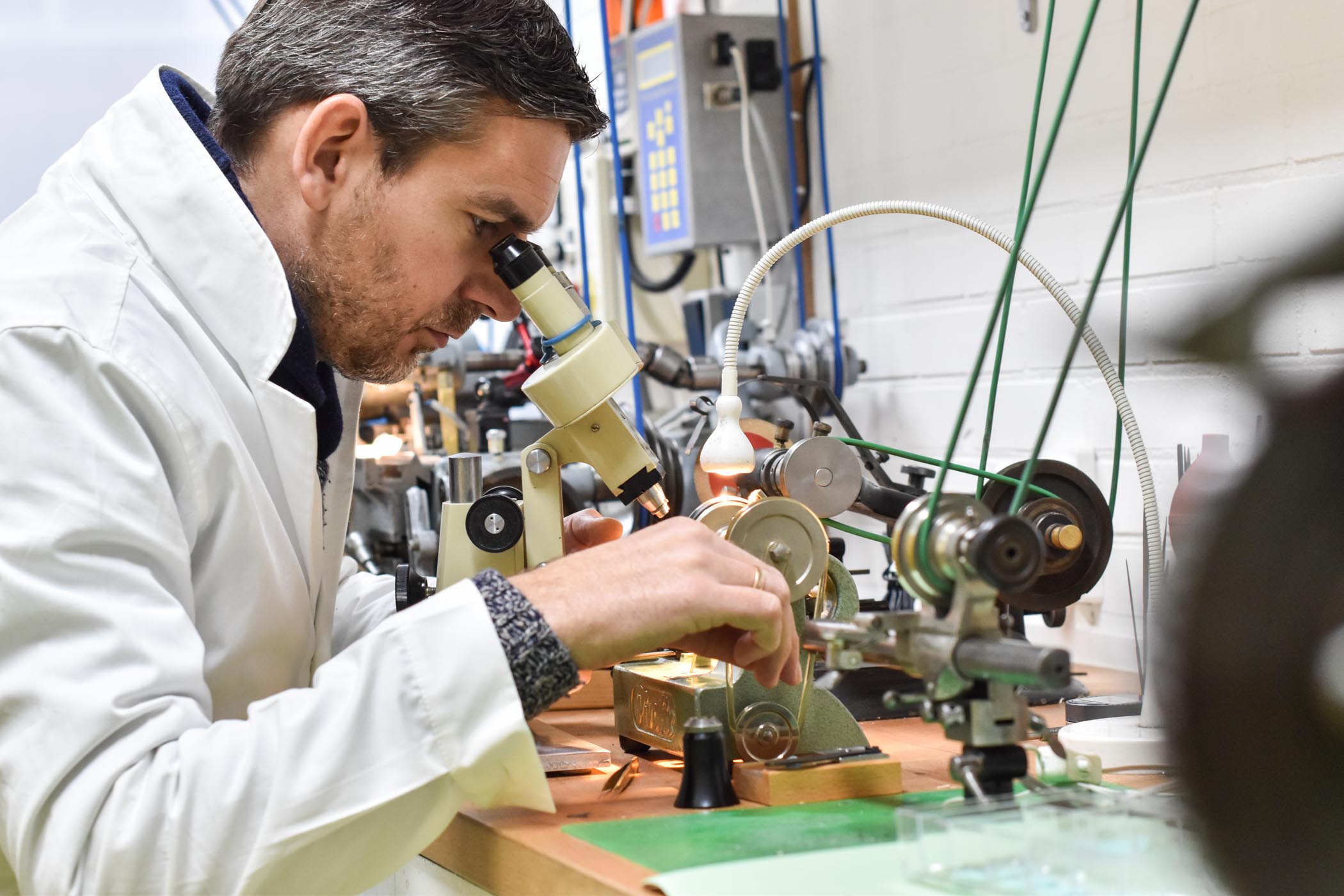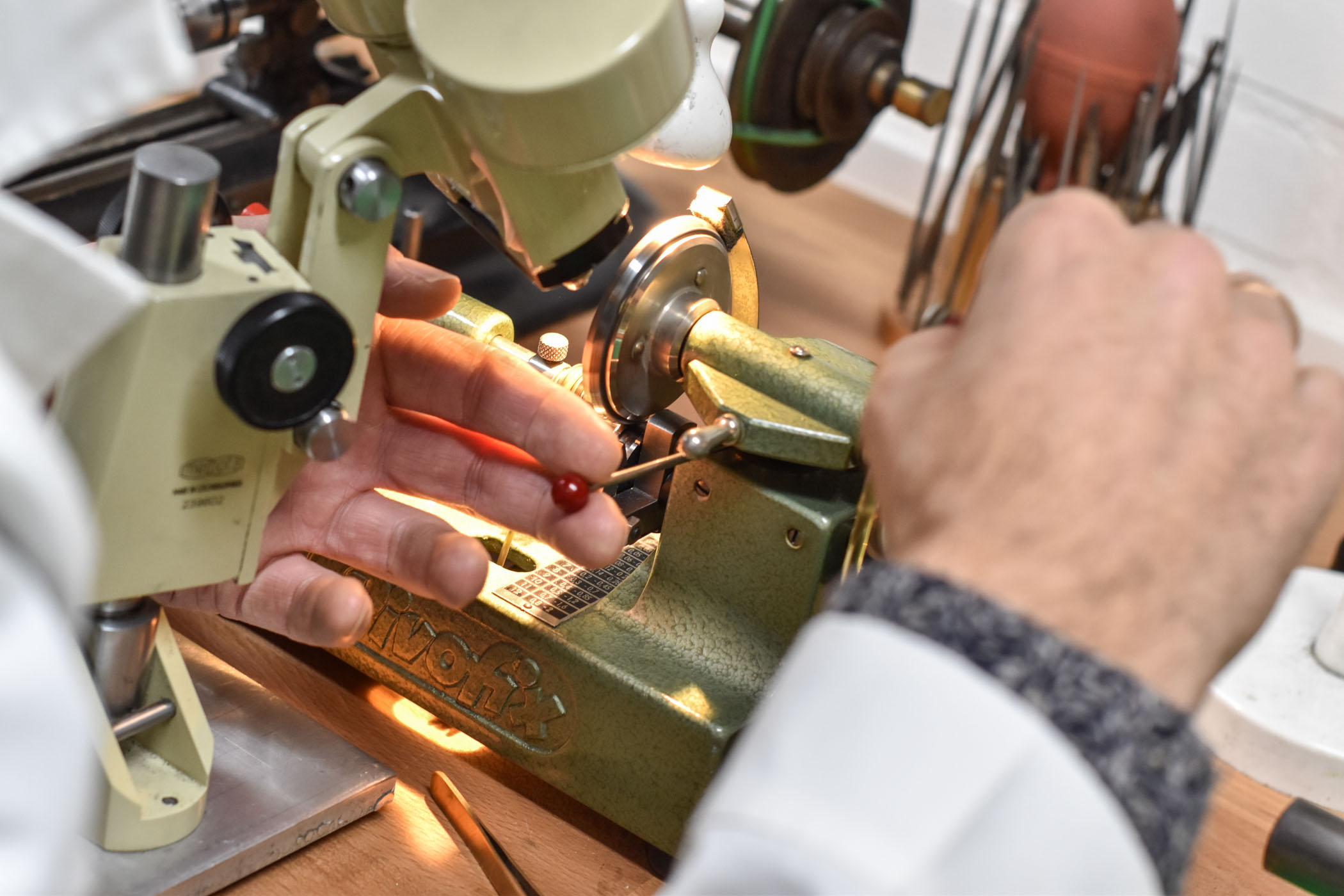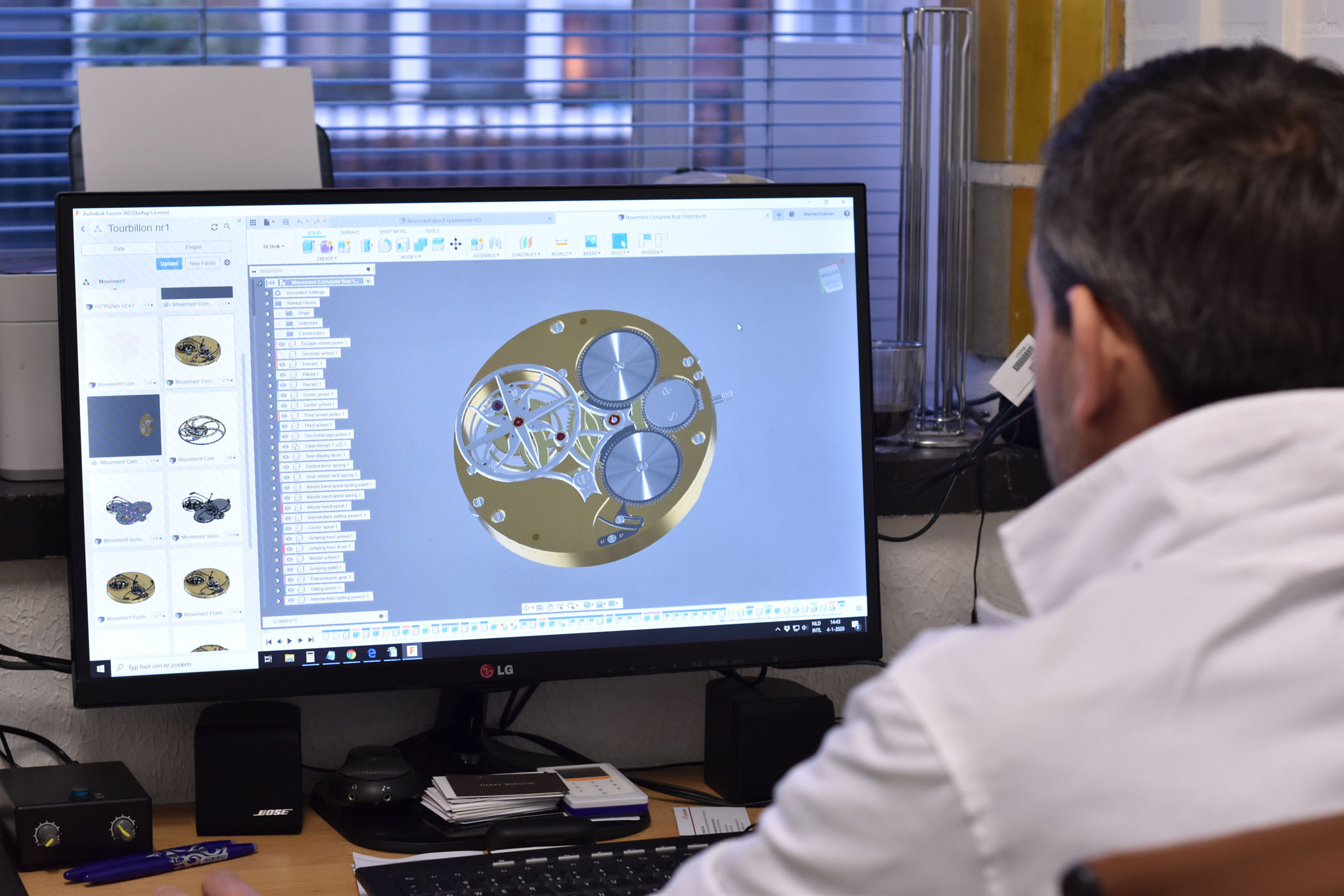Machiel Hulsman, on Creating his Stunning, Hand-Made Tourbillon Watch, and more
In watchmaking, nothing seems easy, but what Machiel Hulsman does is watchmaking at major league level.
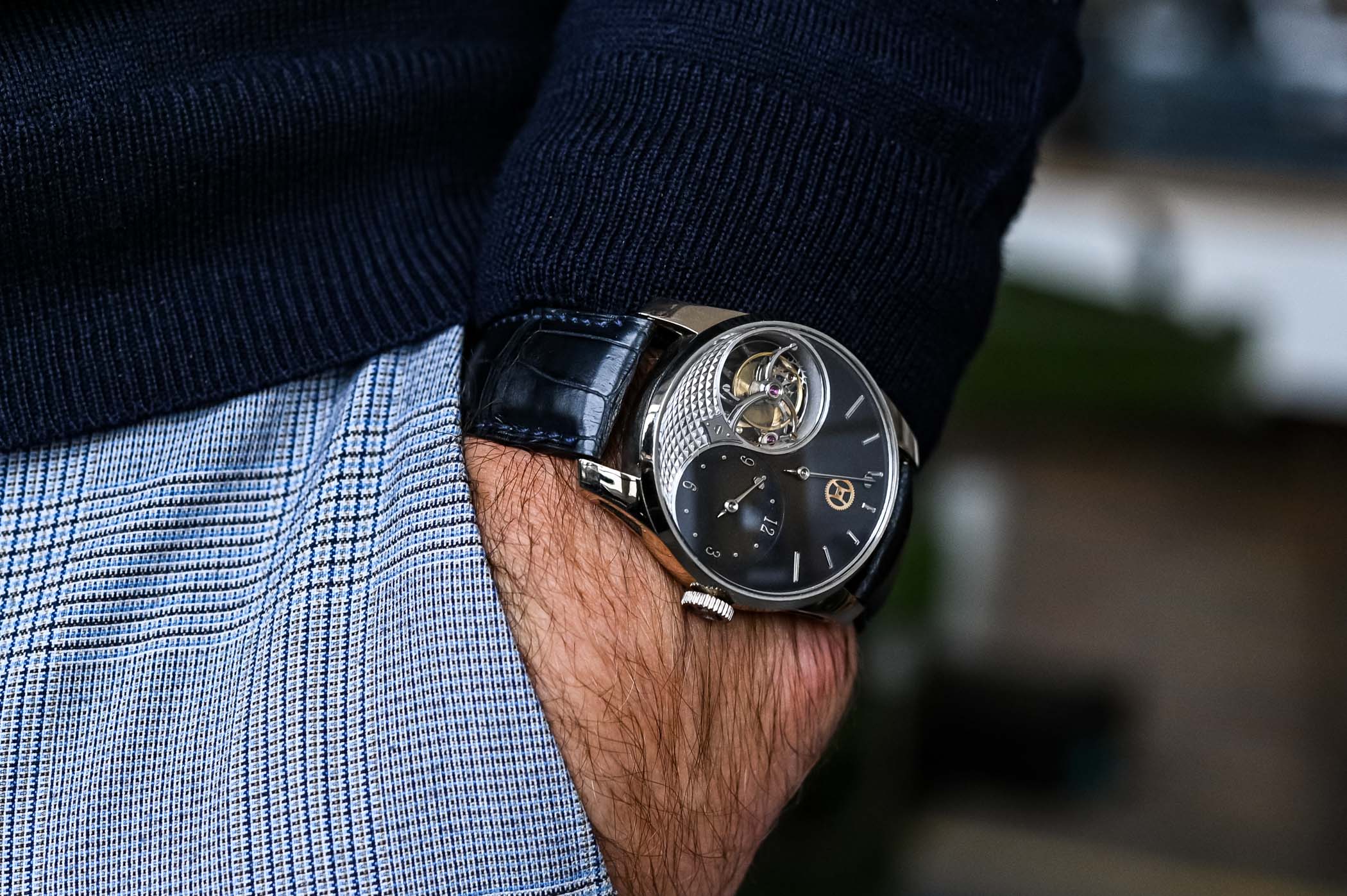
Watchmakers who can create their own tourbillon escapement, and everything that is needed to make a working watch from scratch, are few and far between. And watchmakers living outside of Switzerland, who are able to do this, are perhaps even rarer. We already talked with Machiel Hulsman when he was building his very first watch, which he built from scratch, entirely hand-made by himself. He decided to turn a successful career as an IT consultant in finance, into a watchmaking adventure and is has just recently finished his second watch, comprising a tourbillon escapement, a retrograde minute indicator and a jumping hour indicator.
Frank Geelen, MONOCHROME Watches – What has been keeping you busy these past couple of months, since you finished the Marie-Elise? Spoiler alert, your very first tourbillon watch is just ready, so do tell us more!
Machiel Hulsman, independent watchmaker, founder of Hulsman Timepieces – That’s quite the unexpected story. After giving a presentation of my work to a befriended service club in the Netherlands, one of the members came up to me. That was the start of a new friendship. We started talking and chatting about the timepiece. He wanted a watch with diamond baguettes and a white gold case to match his wedding ring (not rhodium plated). As he is into alternative energy and solar energy, he wanted something in the design that connects with those subjects. Initially, he wanted a classic/sporty watch but he really liked the case of the Marie-Elise, so I redesigned the case with sharper lines to make it look more sporty and modern and made it smaller (the finished timepiece is 39mm by 9mm).
The rest was up to me. I could come up with designs based on his input and we would continue from there, choosing one design and refining it further to his wishes. I always loved jumping hours and retrograde minutes, so I put that in the design as a suggestion. I often found the execution of these complications not very practical, so I designed the two complications as a combined one, where the hours will jump when the minute hand is ‘retrograding’ back to 0 in a split second. This way, there cannot be a misread or confusion (did the hours jump already or will it jump in 10 seconds, is it 14:59 or 15:59, etc.). The customer loved the idea, so it was a definite go.
And then came the construction of the movement. Can you explain to us how that went down?
For the movement, I thought a big but slender tourbillon would be nice, and the customer agreed. I designed a silver dial with a guilloché decoration, diamond indexes, retrograde minutes and jumping hours and a big tourbillon. Then I designed and calculated the gear train (with 20% more energy going to the tourbillon than for a regular escapement). I could fit in two barrels for a decent 75 hours of power reserve (with a sliding ratchet so it won’t use the last part of the mainspring).
I incorporated an ancient solar sign and compass rose in one for the bottom tourbillon bridge to connect to the customer’s interest in solar/alternative energy and found a nice spot on the black polished crown wheel disc for the engraving of his initials. The Côtes de Genève radiates outward from the solar sign as center point.
But I was still hesitant about the big tourbillon cage. I suggested a 28.800vph escapement for precision (and the challenge), but that´s a fast escapement for a tourbillon, let alone such a big one. The escape wheel has to accelerate very fast, but with a big tourbillon cage driving this escape wheel, it could never be as fast as in a regular Swiss lever escapement. Also, wear was a factor for me and the fact that the big cage stops every time the escape wheel gets locked-stopped by a pallet, causing lots of impact on the escapement. Maybe I should have gone for 21.600vph, but part of the challenges would still be there. So I had to come up with an idea to fix this.
You certainly like to challenge yourself. So what solution did you come up with?
I found the solution in the escape wheel. I mounted an extra spring on the escape wheel so it collects its own power from the tourbillon cage being driven by the gear train. The spring’s tension equals each other out. But when a pallet unlocks the escape wheel, the spring on the escape wheel will instantly drive the escape wheel for the impulse. The spring tension is now lower than in the gear train, so the cage will start turning and wind up the little spring again until the tension in the gear train and escape wheel spring are equal again.
Then the next pallet locks the escape wheel, stopping the cage while the little spring will take up the impact of this sudden stop. I used these advantages to design a nice escape wheel that is maybe heavier than you would normally do, but it has its own spring, so no problem there. It rotates on a beryllium copper-bearing for smooth sliding. So in the end we have a fast tourbillon with a shock absorber, less wear and plenty of speed and energy!
What is the next thing you’re working on? Any details you can share with us on that?
For my next project, I was perhaps a bit too enthusiastic. My customer wanted a big date perpetual calendar with a second time zone on the back of the flip-open timepiece, measuring only 39mm in width and a mere 12.5mm in total thickness. I thought, why not make it a 38-time zone complication? I thought I found a solution that was simple, sturdy and could work with a push button and a corrector button in case something would go wrong.
After a while, I found out it was not the best design so I started re-designing the complication. It became more complex than a minute repeater. I knew I was going the wrong way here, so I started again from scratch with the gained insights and found a solution, using fewer parts and using the crown. Now you can go back-and-forth through the time zones and the corrector is not needed anymore, and in the process, I’ve managed to reduce the number of parts. You can imagine it took more than a couple of showers alone to get this one figured out.
So the best work is done in the shower it seems?
For me, sometimes, yes. To find ‘simple’ solutions for complex matters, going from simple to extremely complex and working your way back again is for me a way to see the challenge from a different perspective. This way I also found a sturdy solution for the big date mechanism in the perpetual calendar, using only 3 parts and 2 springs (less is more!). Except for sleep maybe, but there are just not enough hours in a day. Although balancing between working 80 hours a week and having a wonderful family, friends and a social life is sometimes hard, there is nothing in the world I would rather do, the passion keeps me going. At the moment, I am making the parts for this project and discussing further details with the customer. It is hard to describe how wonderful it is to work on such a project with very passionate people who want to collaborate on such a journey. To me, that’s when passion meets passion.
Just exactly how do you develop your skills in watchmaking? Is it simply by doing, or do you train yourself a certain way?
It’s a mix of things, but mainly exchanging information. During the Aurochronos watch fair in Poland, 2 years ago, I met Philippe Narbel from Manufactor (a movement finishing and decorating company). He invited me to come over for a week so he could teach me movement finishing as I told him I wanted to get better in this field. I went to Switzerland this year with a friend of mine to learn finishing at his place for a couple of days and spend three long days at Julien Tixier’s workshop to learn more about materials, finishing, fabricating, etc.
Julien is the Einstein of watchmaking and my mind is still boggling after my visit. Luckily I took a huge amount of notes. It was very humbling to see these guys at work, see their workshops and tools and learn from the real masters who wanted to teach us all they know. They also showed me that sharing knowledge (something I already loved to do) is very important and I gained more insights into how to do so.
I hope I will find a way to repay these guys in more than the very special friendship alone. Maybe helping others by spreading knowledge is the first step. I know I could never have come this far without the help of the people in the Netherlands I can now call friends, and now even abroad.
What sets you apart from other watchmakers?
My motto has always been: fewer parts is better. The Swiss may be bragging about how many parts there are in their watches, I like to find solutions to use fewer parts that can break or wear. Making things simple is often quite complex though, but I am always looking for better solutions and new techniques. It can keep me awake at night, it keeps me busy when I’m taking a shower or driving my car, every moment of the day, it never stops.
Perhaps it is easier for me to find different solutions or think out of the box because I have no background in the Swiss horological industry, I am not even Swiss! The Swiss may be a big player in this field, but they were not the first in Europe to start watchmaking. As Philippe Narbel said: watchmaking is a European heritage, not a Swiss one. And it seems independent watchmaking is growing, especially outside of Switzerland.
That’s something we’ve noticed as well, the expansion outside of Switzerland.
I feel it may be time to consider Watchmaking as a European heritage, instead of purely a Swiss one. We should start spreading our knowledge and help each other to keep our heritage alive, and not keep it a Swiss industry secret. This way we can all enjoy more spectacular timepieces from all over the world and make new friendships.
For more information, please visit HulsmanTimepieces.com

